Greatest Comeback: Nixon, Buchanan, and George Wallace
Jared Taylor, American Renaissance, August 15, 2014
Patrick J. Buchanan, The Greatest Comeback: How Nixon Rose from Defeat to Create the New Majority, Crown Forum, 2014, 400 pp.
Patrick Buchanan is the most prominent American who speaks openly of the importance of preserving our historic nation. As he wrote in his 2006 book, State of Emergency, “If we do not get control of our borders, by 2050 Americans of European descent will be a minority in the nation their ancestors created and built,” and “should America lose her ethnic-cultural core and become a nation of nations, America will not survive.” In 2011, he pointed out in Suicide of a Superpower that as the American population becomes blacker and more Hispanic our international competitiveness will decline.
Mr. Buchanan’s latest book, The Greatest Comeback, is about Richard Nixon’s road to the White House after two crushing defeats that should have finished his career as a politician. It is actually more about Mr. Buchanan — his role as confidant and policy adviser — but it throws light on the complex figure of Richard Nixon and is an engaging account of presidential politicking in what was one of modern America’s most turbulent years: 1968. This is not an openly dissident book like some of his others, but it includes insights into the role of race in American politics, and what Mr. Buchanan writes about the third-party candidacy of George Wallace — which could have kept Nixon out of the White House — is especially interesting.
The young devotee
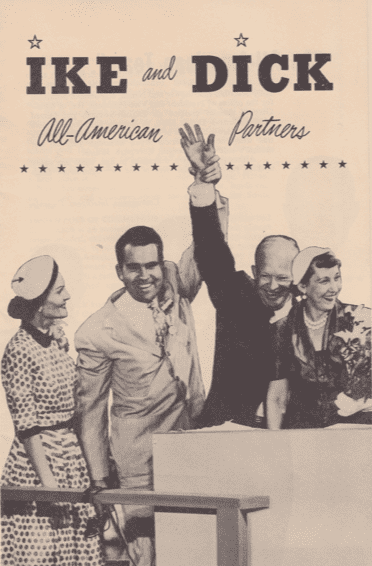
Nixon had served for two terms as Dwight Eisenhower’s vice president before he ran against John Kennedy in 1960. He was one of the country’s best known politicians and had every hope of winning, but lost by one of the thinnest margins in American history. Eisenhower’s support had been tepid, the Republican Party was disorganized, and the press never liked Nixon. Even Kennedy privately conceded that the press was unfair.
Nixon went home, and in 1962 ran for governor of California, confident this would be the perfect office from which to make another bid for the White House in 1968. It was another loss. In his concession speech after his defeat by Pat Brown, he declared he would never run again and took his famous poke at the press: “Think of all the fun you’ll be missing . . . . You don’t have Nixon to kick around anymore . . . .”
Mr. Buchanan followed these events from afar, and had the insight to recognize that Nixon was likely to run again and could win. He appears to have been fascinated with conservative politics all his life; in 1955 he had even caddied for Vice President Nixon. In 1965, he wangled a meeting, in which he told Nixon, “If you’re going to run in ’68, I’d like to get aboard early.” After an interview that Mr. Buchanan describes as “exhausting,” in which Nixon grilled him on his views on every aspect of politics, he was hired to handle Nixon’s correspondence and help him write a monthly syndicated column. Mr. Buchanan had a somewhat larger view of his role: to do everything possible to make Nixon the next President of the United States. Mr. Buchanan — 27 years old — soon became part of the inner circle.
George Wallace
Most of the The Greatest Comeback is about the inner workings of the Nixon political machine: how his advisers helped craft policy positions, how Nixon won the nomination, the turning points in the campaign, the challenges of dealing with the press, etc. Mr. Buchanan gives us a good look at the underside of American democracy, as he describes how carefully Nixon’s managers crafted his messages to follow the polls, and how every step had to be weighed in terms of how the press would react.
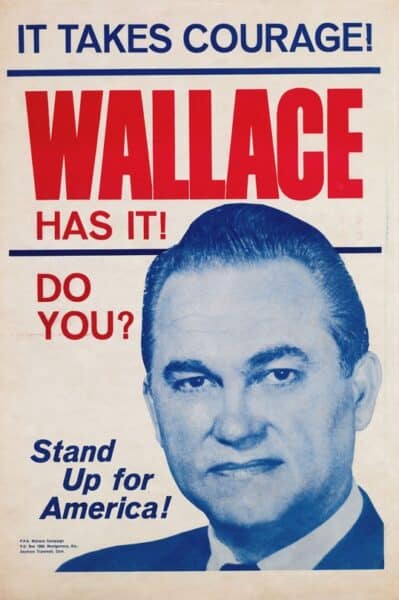
One of the most interesting parts of the book, however, is how the Nixon team dealt with George Wallace. Today, Wallace is mostly dismissed as a primitive white supremacist, but in the 1960s, he cut an impressive figure. Mr. Buchanan reminds us that 1968 was a profoundly traumatic and divisive year that offered a perfect opening for a populist spoiler such as Wallace. The North Vietnamese drove the Americans out of the Marine combat base in Khe Sanh after a siege that lasted for months. Americans were terrified by the Tet Offensive. Martin Luther King and Robert Kennedy were assassinated. Cities went up in flames. Demonstrators paralyzed elite universities. As Mr. Buchanan notes, it was certainly not what President Lyndon Johnson expected when he lit the Washington Christmas tree shortly after his 1964 landslide election and said, “These are the most hopeful times in all the years since Christ was born in Bethlehem.”
In this context, as Mr. Buchanan writes:
Wallace was an ideal backlash candidate. He had been for five years America’s most outspoken opponent of integration. He had denounced hippies, rioters, and campus anarchists with a populist rhetoric Nixon could not match. He was a demon campaigner with a brutal but effective sense of humor. Everywhere he went the crowds were big and excited.
Wallace could appeal to conservative whites in ways that were off limits to Nixon. “Had Nixon dared to try,” notes Mr. Buchanan, “he would have crippled himself with his base of centrists and independents.”
In his 1962 inaugural address as governor of Alabama, Wallace had promised to “make race the basis for politics in this state, and . . . the basis of politics in this country.” For his 1968 presidential campaign, he started a new party, the American Independent Party, and got a place on the ballot in all 50 states. He laughed at Washington bureaucrats, whom he called “pin-head social theorists” and “pointy-headed intellectuals who can’t even park a bicycle straight.” “And what do you think they carry around in those fancy brief cases?” he would ask to roars of laughter. “Ham sandwiches.”
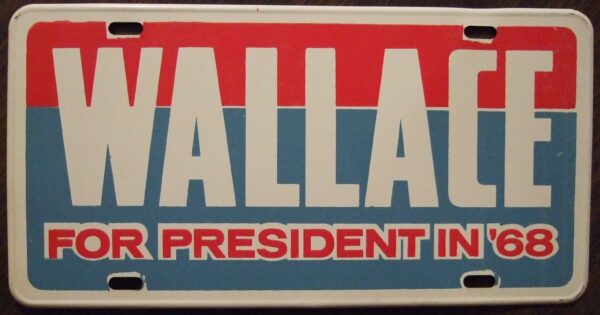
As for Nixon and his Democratic opponent Hubert Humphrey, Wallace warned that “there’s not a dime’s worth of difference between them.”
Once when Wallace was heckled by hippies, he called out to them:
You come up when I get through and I’ll autograph your sandals for you. That is, if you got any on . . . You need a good haircut. That’s all that’s wrong with you. . . There are two four-letter words I bet you folks don’t know: ‘work’ and ‘soap.’
Nixon had none of this off-the-cuff appeal.
Wallace was immensely popular in the South and with working people in the North. At his high point, pollsters predicted he could win 20 percent of the vote. Mr. Buchanan calculated that 60 to 65 percent of the electorate was sick of Lyndon Johnson and the Democrats, but worried that Wallace could take so many votes from Nixon that no one would get enough electoral votes to win, and the election would be decided in the House of Representatives. The Democrat-dominated house would have handed the White House to Humphrey.
How to solve the problem? It is fascinating to learn that in 1968, Republicans were already bewitched by the futile hope of attracting more blacks and Jews (today they would include Hispanics). Even among Nixon’s advisers there was a group lead by William Safire, who wanted to tack left. Mr. Buchanan calls this the “Bring Us Together” view, which “some of us had come to regard as the politics of nice and utterly utopian.”
Mr. Buchanan instead wanted to woo the “Humphrey Catholics” and the “Wallace Protestants.” He was convinced that either group could take Nixon over the top, and that both groups together could give him a landslide. Judging from early poll results, Mr. Buchanan figured that Wallace could get 12 million votes. Peeling away 8 percent of those votes was the equivalent of getting 20 percent more black voters — highly improbable — or increasing the tally of Jewish votes by 60 points, which was impossible. The choice was obvious, but Mr. Buchanan had to fight for his position. His overall advice:
I urged Nixon to treat Wallace with the respect the press denied him. If asked, ‘Mr. Nixon: Do you consider Wallace a racist?’ I told Nixon he should reply, ‘Governor Wallace, by his own admission, believes in segregation and I oppose segregation.’ Not calling Wallace vile name and treating him with decency would make Nixon more acceptable to Wallace voters when they abandoned his candidacy to choose Nixon or Humphrey. Moreover, it was the right thing to do. We did not know what was in George Wallace’s heart. Years later, I came to know and regard the governor as a friend.
In these hysterical times, it takes a brave man to say that he considered George Wallace a friend.
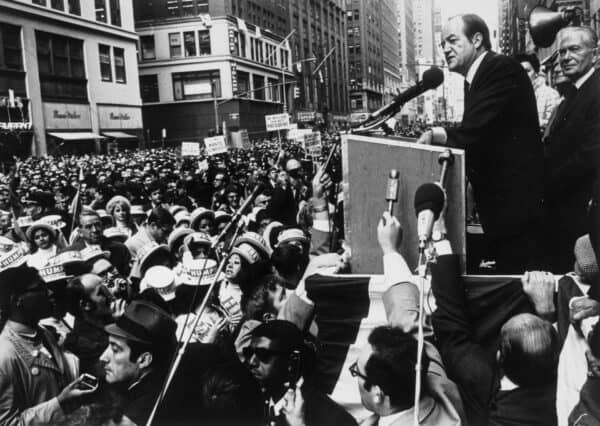
Hubert Humphrey campaigning in 1968. (Credit Image: Kheel Center via Wikimedia)
Needless to say, there were plenty of people in the press who thought anything short of blasting Wallace with the fires of hell was a sign of bigotry, but Nixon continued to treat Wallace with respect. As Mr. Buchanan notes, the press kept to its usual biases. It looked the other way when Humphrey cozied up to Lester Maddox, the segregationist Democrat governor of Georgia, who had kept blacks out of his restaurant by brandishing a pick handle. Walking arm in arm with Maddox, Humphrey said, “I am happy to be in the presence of a good Democrat,” adding, “The Democratic Party is like a big house. There’s room for all of us.”
Mr. Buchanan agrees with the general assessment that Wallace was badly hurt by his choice of running mate, General Curtis LeMay. LeMay had run the B-29 bombing campaign against the Japanese, and when Wallace first introduced him to the press, a reporter asked if LeMay would use nuclear weapons in Vietnam. LeMay left no doubt that he thought it was a good idea, and Wallace had to step in to stop LeMay going any further. For the rest of the campaign, Wallace had to dodge shots aimed at “Bombs Away” LeMay.
This was a lucky break for Humphrey, whose party convention had been a nightmare. In that way activists have of hating people who are politically close to them more than they hate outright opponents, 10,000 hippies, Yippies, anarchists, and SDS supporters gathered in Chicago for the convention, determined to stop Humphrey. They were furious because they thought that as vice president, he had helped Johnson drag the country into the Vietnam War. They filled Grant Park, where they chanted “Dump the Hump,” and shouted obscenities at the police, who eventually lost patience and attacked the demonstrators for 17 violent minutes in what became known as the Chicago “police riot.”
The riot and the open warfare within his party set the Humphrey campaign off to a terrible start, but Mr. Buchanan admires the grace and persistence with which “the happy warrior” fought back to a near draw. Humphrey moved left, promised to end the war in Vietnam, and picked up a good number of the people who had wanted to dump him. And, as later analysis of news coverage confirmed, he was helped by a national press that backed him overwhelmingly.
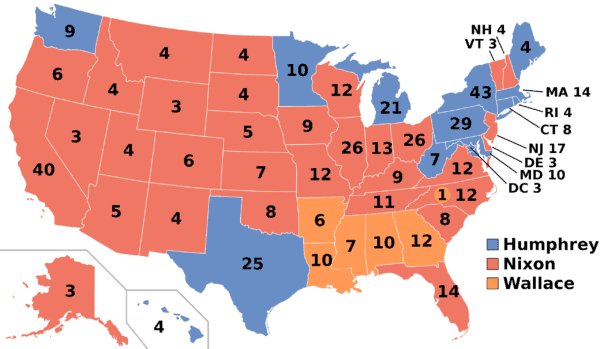
In the end, Wallace got only 13.5 percent of the vote, though he won five states, all in the South. Nixon barely nudged out Humphrey — 43.4 percent to 42.7 percent — and managed to keep the election out of the House of Representatives. The divided election was a sign of divided times; Nixon’s limousine was pelted with rubbish as he rolled down Pennsylvania Avenue to the White House after his inauguration.
Spiro Agnew
Mr. Buchanan offers other interesting glimpses of the times. Nixon’s running mate, Spiro Agnew, was later caught in a bribery scandal and became the first vice president in American history to resign, and was generally seen as a gaff-prone liability. Why did Nixon choose him?
Agnew was governor of Maryland in 1968, when Baltimore suffered a week-long black riot after King was assassinated. Agnew called in federal troops to help restore order and then invited 100 black leaders to a televised meeting before the press corps. He excoriated them for not denouncing the black radical, Stokely Carmichael, who had been stirring up trouble. Not one black leader, he pointed out, had said a word when a Carmichael lieutenant called the Baltimore police “the enemy of the black community.” Agnew had learned of a secret meeting with Carmichael, in which there had been an agreement that no black would publicly criticize another black, no matter what he said. Agnew called this a “perverted sense of race loyalty.” Many blacks walked out and white liberals screeched, but Nixon admired Agnew’s toughness. Mr. Buchanan says the Baltimore speech was “a major factor” in Nixon’s choice of VP. In another admission that will win him no friends, Mr. Buchanan adds that he liked and always got on well with Agnew.
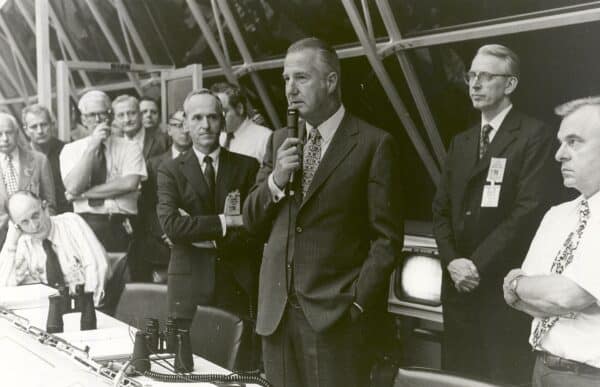
Spiro Agnew
There are other bits of lore. In 1963, even before the Civil Rights Act of 1964 and the federal Fair Housing Act of 1968, the California state legislature had passed a law forbidding landlords or homeowners from racial discrimination in rentals or sales. The California Real Estate Association thought this was a violation of private property rights, and it got one million signatures — twice the number needed — for a ballot initiative to overturn the law. The initiative won with a resounding 65 percent of the vote, but the California Supreme Court struck it down on the novel theory that it violated the Equal Protection Clause of the 14th Amendment.
When Ronald Reagan ran for governor of California in 1966, he promised to repeal the law and let Californians rent or sell to whomever they liked. He never got the chance; the US Supreme Court upheld the Californian Court’s rejection of the ballot initiative. Still, it is interesting to note that the man whose name is on Washington Reagan Airport campaigned for freedom of association.
Mr. Buchanan does not have much admiration for Robert Kennedy, who jumped into the race for the Democratic nomination only after Senator Eugene McCarthy’s shoestring-budget New Hampshire campaign had shown that Lyndon Johnson was vulnerable. (Johnson was so demoralized by the war and by dissent in his own party that he later declared he would not run for reelection). Mr. Buchanan notes that when Robert Kennedy had been attorney general for his brother John, he had authorized wiretaps on Martin Luther King. By 1968, however, King was a martyr, and Robert denied knowing anything about the wiretaps. A furious J. Edgar Hoover called that “absolutely inconceivable.”
Mr. Buchanan is obviously master of his material in this book, but he draws a strange conclusion from the chaos of the Chicago Democratic convention. He calls it “a crisis of liberalism” and proof that “liberalism was being rejected as a failed ideology. It had been tried and found wanting.”
If only that were true. Nixon and Reagan briefly slowed the march of some elements of liberalism, but it has been the crushingly dominant ideology of the last 50 years. It does now have a slightly different flavor: It has lost its tincture of revolutionary Marxism, and few college students hang pictures of Che Guevara in their dorms. But it is hard to think of a single change in American society that the mob in Grant Park would not have approved: forced integration, race preferences, multiculturalism, white-shaming, homosexual marriage, de facto amnesty for illegals, campus speech codes, women in combat, “medical” marijuana. Workers have not seized the means of production and it is still possible to become a billionaire, but otherwise today’s America is a revolutionary’s dream come true.
The comeback goes bad
Mr. Buchanan gives Nixon very high marks for his first term in office, and believes that if he had vanished in 1973 he would be remembered as a great or near-great President. Indeed, he was reelected in 1972 with an overwhelming 62 percent of the vote, and won 49 states. And yet, of course, he was destroyed by the Watergate scandal, and became the only president ever to resign. The clouds of disgrace never entirely parted over his later years.
Mr. Buchanan was by Nixon’s side up until the moment he helicoptered off the South Lawn for the last time. “All that,” he writes, “is the subject, the Lord willing, of another book.” The Greatest Comeback is a unique insider’s view of an important part of American history. Let us hope the Lord is willing.















